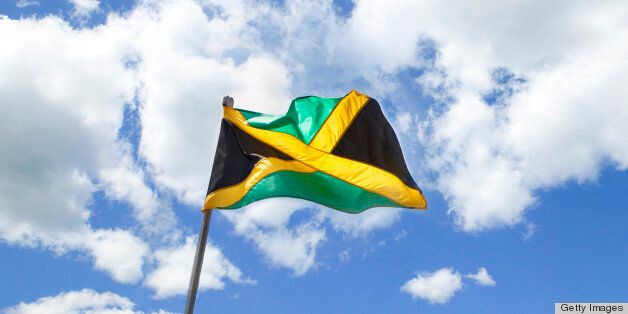
Pop open a Red Stripe, break out the reggae and fire up a "birthday candle" in honor of Jamaica's 52 years as an independent nation. It has not been an easy road since Jamrock's 2 million citizens saw the Union Jack flag lowered for the last time and the black, gold and green fly proudly for the first time. But today, we will not speak about political strife, unemployment, violence, poverty and crushing national debt. Today, we will celebrate the small island nation which has become known in every corner of the globe for its glorious music, innovative culture and vibrant spirit. Here are seven of the greatest things about Jamaica:
1. Diversity
More than 90 percent of Jamaicans identify as Black but many are multi-racial and trace their origins to Europe and Asia in addition to Africa. The island was first settled as early as 4000 BC by the Arawak and Taino people who named their new home Xaymaca (land of wood and water). Colonized by Spain in 1494 and then England in 1655, both nations brought thousands of laborers from Ghana to work as slaves on the sugar plantations. After emancipation, waves of immigration from China and India brought more low-wage workers to the island, many of whom settled permanently and started families with Jamaicans of a different cultural heritage. Jamaica's official motto "Out of Many, One People" which appears on the island's Coat of Arms is a tribute to the island's racial diversity.
2. Reggae
What other genre of popular music so completely represents every facet of human existence including the spiritual, political, sexual and the all-important booty shaking? Since the 1970s Bob Marley's image has adorned t-shirts and dorm room posters from San Jose to Addis Adaba. His fame has increased exponentially since his death, and he still sells about a million albums a year. His sons Ziggy, Stephen, Ky-Mani and Damian are prodigious recording artists in their own right. But the bestselling reggae artist of all time isn't Bob or one of his sons, but rather Sean Paul, whose 14-year career has featured collaborations with some of the most popular American hip-hop and R&B stars, such as Beyonce and 2 Chainz.
3. Art
Reggae artists get a lot of credit for enriching the culture, but Jamaica also has a strong tradition in the visual arts. You might not know master painter Barrington Watson by name, but surely you've seen his luminous portrayals of street scenes or female nudes. "I utilize the light of Turner, the line of Ingres, the range of Rembrandt, the techniques of Velasquez, the emotion of Goya, and my birthright of Benin," he once said, of his paintings. Other notable Jamaican artists include Ras Daniel Hartman, Laura Facey, Ebony Patterson and Ken Spencer.
5. Athletes
Jamaica's most famous athletes were once on its bobsledding team, and they were not known for their performance record, but rather for their audacity. But for the past few decades, Jamaica has been home to legendary champions of track and field, such as the world record-holding sprinter, Usain Bolt, and a bevy of lightning-fast women such as Veronica Campbell-Brown, Samantha Henry-Robinson and Sherone Simpson.
6. Food
If you've ever had jerk chicken, curry goat, Ackee and Saltfish, rice and peas, beef or chicken patties, oxtail, Callaloo and Codfish, then you already know what I'm going to say. Jamaican food is all about eating well on a budget and using what is fresh, delicious and readily available to prepare a generous spread that brings friends and family together.
7. Maroons
When the British drove the Spanish out of Jamaica, many of the slaves from the Spanish plantations escaped and moved inland, banding together with the Arawak people, and subsisting on communal farming and occasional plantation raiding. For almost 100 years, the Maroons evaded capture by the British and grew in numbers by offering safe harbor to runaway slaves. A 1738 treaty offered the Maroons 2500 acres of territory in exchange for their aid in recapturing any future escapees. They were also required to fight for the British in the event of an attack from another European power. Before long, the treaty was dissolved, and the British government deported hundreds of Maroons to Nova Scotia. Descendants of the Maroons still inhabit the town of Accompong in the southwest of the island. The most famous Maroon, "Queen Nanny," was renown for her leadership skills and battle strategies. She was named as one of Jamaica's seven National Heroes by the independent Jamaican government.